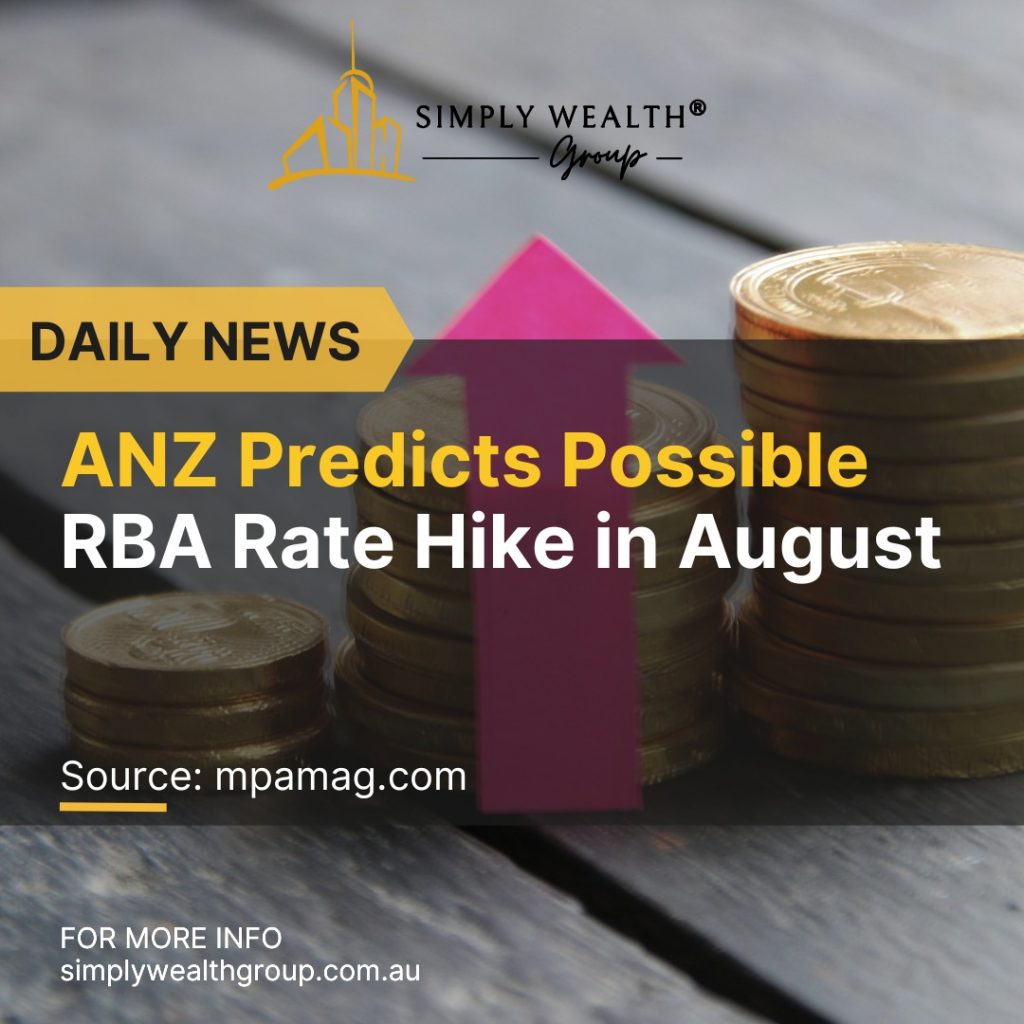SMSF Lookup: Your Guide to Verifying SMSF Funds and Securing SMSF Loans

What is SMSF Lookup and Why is it Important? SMSF Lookup is a free online tool provided by the Australian government to help individuals verify the legitimacy of Self-Managed Super Funds (SMSFs). The tool is designed to give trustees, employers, and financial institutions confidence when dealing with SMSFs, ensuring they comply with the Australian Taxation Office (ATO) regulations. By simply entering the ABN of an SMSF, users can check the fund’s current status, including its compliance and eligibility to receive contributions or rollovers. But what is SMSF, and why is it crucial for investors? SMSF, or Self-Managed Super Fund, is a private superannuation fund managed by its members, who are also trustees. This type of super fund allows individuals greater control over how their retirement savings are invested. However, with this control comes the responsibility to comply with strict regulatory requirements. SMSF Lookup plays a critical role here, as it ensures that the fund is legitimate and meets the ATO’s compliance criteria, reducing the risk of dealing with non-compliant or fraudulent funds. The SMSF meaning goes beyond just managing your own super; it represents financial independence and control. That’s why using the SMSF Lookup tool is important. Whether you are an employer looking to contribute to an SMSF or an investor considering using your SMSF for property investment, verifying the fund’s status ensures that you are making informed decisions. It’s an essential step in securing your financial future and avoiding costly compliance issues. How to Use the SMSF Lookup Tool to Verify Your SMSF Details The SMSF Lookup tool is an easy and efficient way to verify the details of your Self-Managed Super Fund. Whether you’re a trustee or someone managing an SMSF, this online tool helps ensure that your fund is compliant with the Australian Taxation Office (ATO) regulations. To begin, simply access the SMSF Lookup website and enter your fund’s ABN (Australian Business Number). This quick search provides vital information about your fund’s status, including whether it’s eligible to receive contributions or rollovers, giving you peace of mind that your SMSF is operating legally and securely. When setting up an SMSF, ensuring your details are accurate from the start is crucial. During the SMSF setup, many trustees overlook the importance of regularly checking their fund’s compliance status. Even after the initial setup, it’s essential to periodically use the SMSF Lookup tool to verify that the fund’s information is up-to-date, particularly before making significant investment decisions. This step helps avoid any unexpected issues, like missing out on contributions or failing to meet ATO requirements, which could result in penalties. In addition to safeguarding your fund, the SMSF Lookup tool can also protect you from inadvertently engaging with non-compliant SMSFs when making contributions or rollovers. For instance, employers can use the tool to verify that an employee’s SMSF is legitimate before making super contributions. It’s a simple but powerful resource for trustees, investors, and employers alike, ensuring that SMSF compliance is maintained throughout the life of the fund. Regularly using the lookup tool is a key part of managing a successful and secure SMSF. The Role of SMSF Verification in Securing SMSF Loans Securing SMSF loans is an attractive option for investors looking to grow their retirement savings by purchasing property through their Self-Managed Super Fund (SMSF). However, before lenders approve these loans, they require verification that the SMSF is compliant with Australian Taxation Office (ATO) regulations. This verification process, often conducted using the SMSF Lookup tool, confirms that the fund is eligible to borrow and invest in assets like property. Without this verification, banks and financial institutions are unlikely to approve a loan, as the risk of dealing with non-compliant funds is too high. For investors planning to use an SMSF property strategy, SMSF verification is a crucial step. When you apply for an SMSF loan, lenders not only assess the financial standing of the fund but also its legal compliance. Verification ensures that your SMSF is properly set up, registered, and capable of handling the complexities of borrowing and managing property. Lenders rely on this process to confirm that your fund is following the strict rules governing SMSFs, reducing their risk and ensuring that your fund can manage the loan responsibly. Ultimately, SMSF verification is more than just a formality—it’s a gateway to securing SMSF loans and expanding your investment portfolio. By ensuring your SMSF is verified and compliant, you open the door to opportunities like purchasing investment properties, which can significantly boost your fund’s long-term growth. Regular verification helps maintain your fund’s credibility and keeps you on track for future borrowing opportunities, all while adhering to ATO regulations and protecting your retirement savings. Common Issues with SMSF Lookup and How to Fix Them Securing SMSF loans is an attractive option for investors looking to grow their retirement savings by purchasing property through their Self-Managed Super Fund (SMSF). However, before lenders approve these loans, they require verification that the SMSF is compliant with Australian Taxation Office (ATO) regulations. This verification process, often conducted using the SMSF Lookup tool, confirms that the fund is eligible to borrow and invest in assets like property. Without this verification, banks and financial institutions are unlikely to approve a loan, as the risk of dealing with non-compliant funds is too high. For investors planning to use an SMSF property strategy, SMSF verification is a crucial step. When you apply for an SMSF loan, lenders not only assess the financial standing of the fund but also its legal compliance. Verification ensures that your SMSF is properly set up, registered, and capable of handling the complexities of borrowing and managing property. Lenders rely on this process to confirm that your fund is following the strict rules governing SMSFs, reducing their risk and ensuring that your fund can manage the loan responsibly. Ultimately, SMSF verification is more than just a formality—it’s a gateway to securing SMSF loans and expanding your investment portfolio. By ensuring your SMSF is verified and compliant, you open the door to
Advice for Young First Home Buyers

Unsurprisingly, one of the biggest hurdles for young people getting a mortgage is affordability. Melisa Sloan, founder of Madison Sloan Lawyers and author of Big Moments said that high demand and property shortages make things even tougher. “The biggest hurdle is affordability and obtaining finance in an environment where property prices, particularly in city areas are relatively high. Saving for a deposit and the ability to service a mortgage has increasingly become difficult for young people over the past two years, with many now reliant on parental or other family help to obtain a mortgage and get into the property market,” said Sloan. “Many people with good jobs and the ability to service a loan find themselves unable to obtain a mortgage because they do not have a sufficient deposit that is required by lenders. Additionally, property shortages continue to make it difficult for people for young people to get a mortgage.” You may read the whole article here:https://bit.ly/4d1mYQg
New Properties for Sale Up 1.3% – PopTrack

New listings in the housing market have increased year-on-year despite a seasonal slowdown, according to the latest PropTrack Listings Report. Compared to the previous month, June 2024 saw new listing volumes down 15%, marking the transition into a quieter season. Every capital city and regional area reported a monthly decrease in new listings in June. However, new listings were 1.3% higher compared to June 2023. Among capital cities, only Perth (-5.7%), Darwin (-6.7%), and Canberra (-2.6%) saw a year-on-year decline in new listings. In regional markets, only South Australia (+8.2%) experienced an increase in new listings over the year. You may read the whole article here:https://bit.ly/4bIZ8rt
Consumer Spending Up Over the Year

According to NAB’s transaction data, consumer spending has remained steady, with total spending on both goods and services flat. Despite this, discretionary spending saw a modest increase of 0.6% month-on-month, while non-discretionary spending declined by 1%. The decrease in non-discretionary spending was primarily due to a significant drop in expenditure on utilities and fuel. Annual growth in consumer spendingConsumer spending is up 5.6% over the past 12 months. However, consumption growth has softened since the beginning of this year, according to Alan Oster, group chief economist at NAB. You may read the whole article here:https://bit.ly/3zPcrcq
ANZ Predicts Possible RBA Rate Hike in August

Despite speculation that the Reserve Bank of Australia (RBA) might raise the official cash rate at its August meeting, ANZ has forecasted that rates will remain unchanged until February 2025, when it predicts a rate cut. The bank noted that while the Reserve Bank kept the cash rate on hold at 4.35% at its June meeting, the post-meeting statement was slightly more hawkish, with the RBA board stating that they are willing to “do what is necessary” to return inflation to target and will remain vigilant to upside risks in inflation. “Following the stronger than expected monthly inflation print for May, there has been some talk about the possibility of a hike at the RBA’s August meeting,” ANZ said in its report, authored by economists Sophia Angala, Madeline Dunk and Catherine Birch. You may read the whole article here:https://bit.ly/3zD0o29
Consumers Fear Rate Hike Impact

An unexpected drop in confidence saw consumer expectations for variable mortgage rates jump 12.8 per cent in July. According to the Westpac-Melbourne Institute’s Mortgage Rate Expectations Index, this is “the steepest monthly rise since we began running this question in every survey at the start of 2022.” The historical average figure of the index is 143.8. In the last three months, however, there has been a 30 per cent surge, with a below-average read of 122.8 in April to 159.2 in July. What is being dubbed a “sudden hawkish turn” is reportedly the most abrupt change seen in the last seven years. Currently, just under 60 per cent of consumers are expecting a mortgage rate rise over the next year. You may read the whole article here:https://bit.ly/3W0gzhj
Bendigo Bank: RBA Cash Rate to Stay Unchanged All Year

Resolve Finance has announced that the 2024 financial year was a record year for the business, with loan volumes surpassing $1.74 billion. This represents a substantial 11% year-on-year increase for the broker franchise, highlighting its continued growth, and success of the franchise business in the highly competitive mortgage broking industry. It comes after a bumper 2023 for the broker network. A significant portion of this growth can be attributed to strong first-time buyer activity. The number of First Home Buyer schemes and grants Resolve brokers have assisted with has increased by 29% from FY23 to FY24. You may read the whole article here:https://bit.ly/4eT0anx
Population Surge Intensifies Housing Shortages

Australia’s national shortage of dwellings has become more critical due to record population growth, according to Hotspotting. In 2023, the country’s population increased by 651,000, the highest in history, with 84% of that growth attributed to overseas migration. “The record level of population growth last year did not cause the shortage of dwellings, including the under-supply of rental homes,” said Terry Ryder director at Hotspotting. You may read the whole article here:https://bit.ly/4bvSa9f
Australian Household Spending up Slightly

Household spending in Australia rose 0.1% over the past year, according to figures recently released by the Australian Bureau of Statistics (ABS). Spending on services increased by 2.3%, driven by higher expenditures on health and other services, while spending on goods fell 2.5%, led by declines in clothing, footwear, and goods for recreation and culture. Non-discretionary spending rose 1.8%, with significant contributions from health expenses and vehicle purchase and operation costs. Discretionary spending decreased by 1.9%, primarily due to reduced spending on clothing, footwear, and accommodation services. You may read the whole article here:https://bit.ly/4cxUJJ0
Rent Prices Rise in June Quarter – PropTrack

The median weekly rent for dwellings in Australia’s capital cities rose by 3.2% to $640 in the three months ending June, following a 4.2% increase in the March quarter. Latest market insight from PropTrack showed even stronger rental growth in regional areas, which posted a 3.9% increase in the same period, pushing the median weekly rent to $540. Rents are now 10.3% higher than a year ago in capital cities and 8% higher in regional areas. Units have seen greater rent increases than houses, both quarterly and annually, narrowing the rental price gap between the two. In capital cities, houses now have only a $30 premium over units. You may read the whole article here:https://bit.ly/3Wb4t6v

